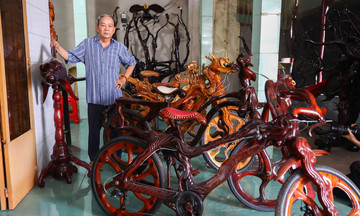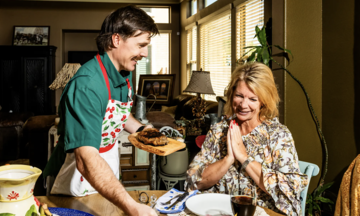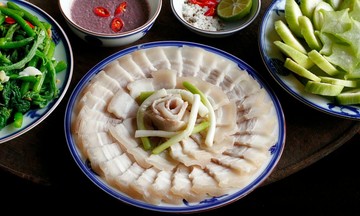Bun thang
Bun thang is considered a benchmark of Hanoi's culinary sophistication. A bowl of bun thang offers a harmony of colors, aromas, and flavors, resembling a vibrant, multi-dimensional painting. The broth is both light and rich, with a distinct aroma of ca cuong (a type of giant water bug used for flavoring) that evokes a sense of nostalgia.
Bun oc nguoi (cold snail noodle)
Bun oc nguoi is one of Hanoi's unique culinary traditions. As author Vu Bang wrote in "Hanoi Delicacies," "This dish can be said to have reached the pinnacle of Hanoi's culinary art."
Bun cha (vermicelli with grilled pork)
Bun cha embodies the essence of Hanoi's cuisine. As Vu Bang praised, "One bite and you'll remember it for a year."
CNN described it as: "The soft, cool, white vermicelli noodles dipped in the sauce create an unforgettable, unique flavor for anyone who has tried it",
This dish was also featured in a cookbook celebrating Queen Elizabeth II's Platinum Jubilee and was listed among National Geographic's top 10 street foods worldwide.
In 2016, during his visit to Vietnam, US President Obama and celebrity chef Anthony Bourdain dined at Bun Cha Huong Lien and praised the dish.
Bun rieu cua dong (crab noodle soup)
A bowl of bun rieu cua dong captures the spirit of Hanoi's cuisine: golden-brown crab paste floats atop a clear broth, accented with bright red tomatoes and soft white noodles interspersed with shredded water spinach. The rich, fragrant crab paste blends with the sweet, slightly sour broth, creating an unforgettable harmony that is both light and satisfying for all ages.
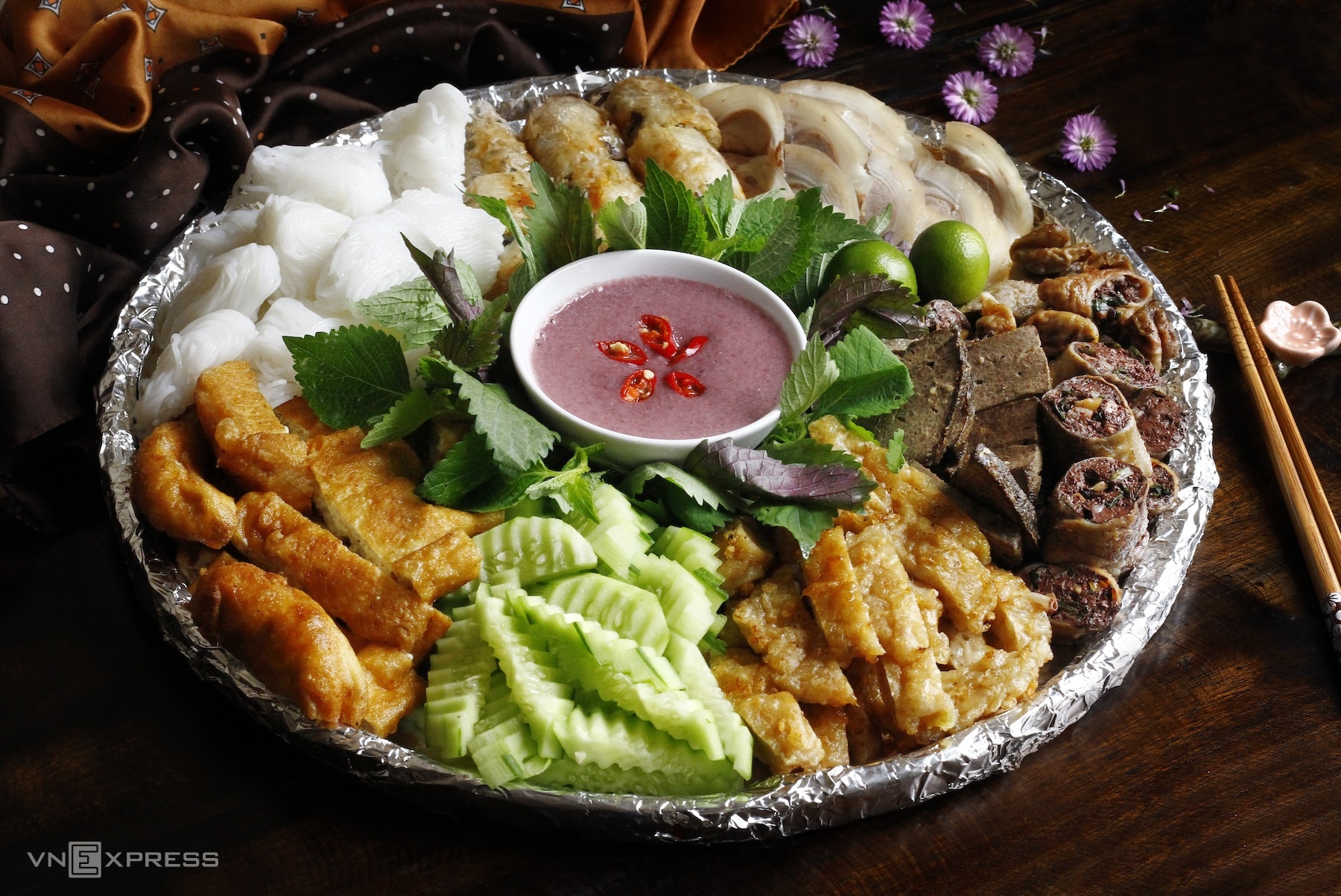 |
Bun dau mam tom (vermicelli with fried tofu and shrimp paste)
Among Hanoi's countless delicacies, bun dau mam tom stands out for its rustic yet unforgettable character. On a banana-leaf-lined bamboo tray, hot, crispy fried tofu is arranged next to white vermicelli noodles, accompanied by fresh herbs like kinh gioi (Vietnamese balm) and tia to (perilla), and cool cucumber slices.
Bun hen mau cua chung (clam noodle soup with crab paste)
Bun hen mau cua chung attracts diners with its delicate, bite-sized white noodles dipped in golden, fragrant, and rich crab paste. Topped with fried onions and fresh herbs, it tantalizes the taste buds. This dish requires meticulous preparation but is truly exceptional, leaving a lasting impression. Few restaurants still serve it, perhaps due to the labor involved and the scarcity of crab paste. Consequently, those who appreciate old Hanoi's culinary traditions often make it themselves.
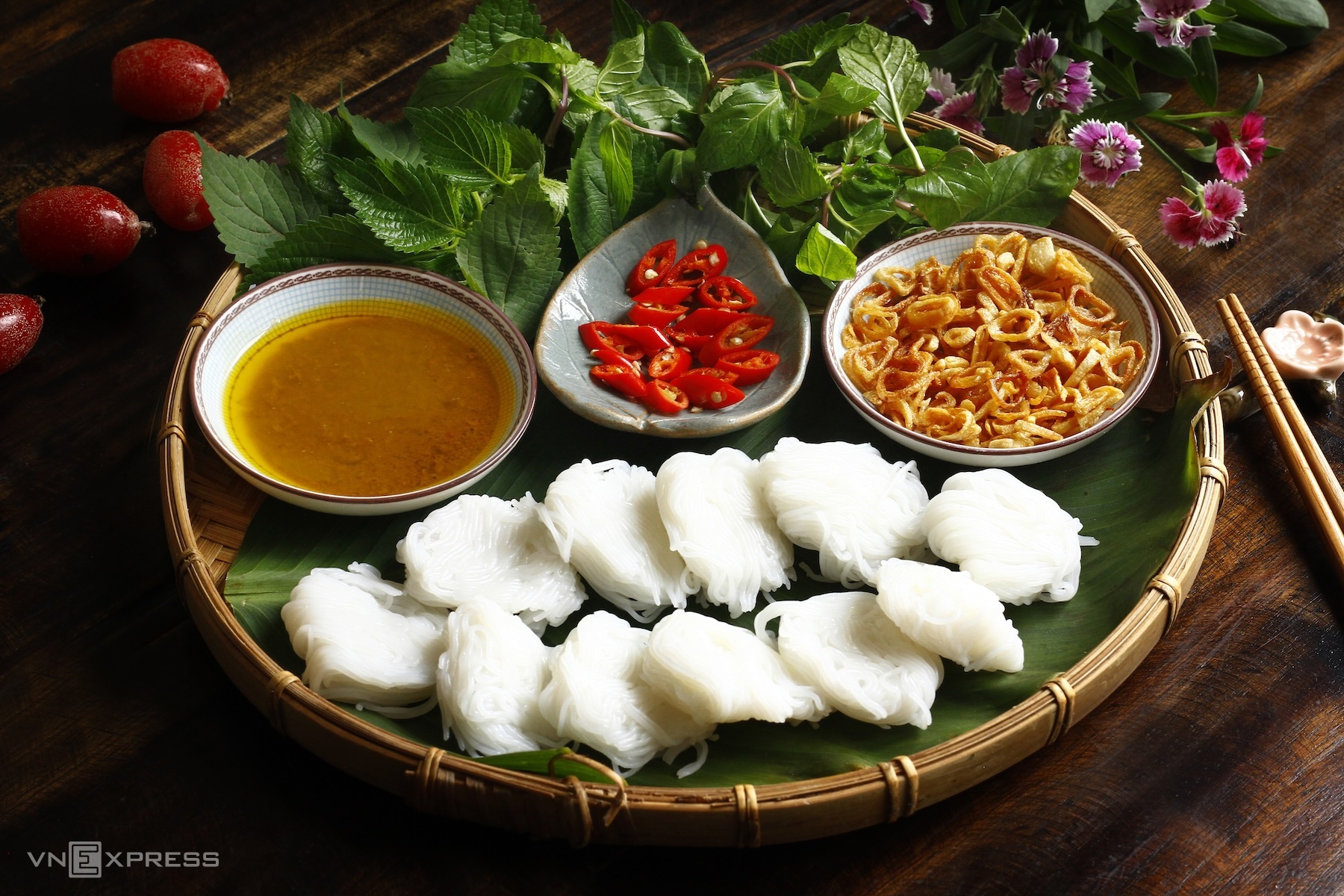 |
Bun hen mau cua chung. Photo: Bui Thuy
Canh bun (crab soup with vermicelli)
Canh bun was a staple for many Hanoians during the subsidy period, when street vendors navigated narrow alleyways, carrying the aroma of steaming crab soup. Today, this dish has become rare, found only in a few old eateries on streets like Hoe Nhai, Thanh Ha, Nguyen Sieu, Hang Chieu, or O Quan Chuong, serving as culinary reminders of a refined and rustic old Hanoi.
Bun ca cham (dipping fish noodle)
Bun ca cham is a relatively new addition to Hanoi's culinary scene, but it has quickly gained popularity due to its multi-layered flavors.
Bun ca cham is simple, but its unpretentious nature suits today's urban lifestyle, leaving a lasting impression on anyone who tries it.
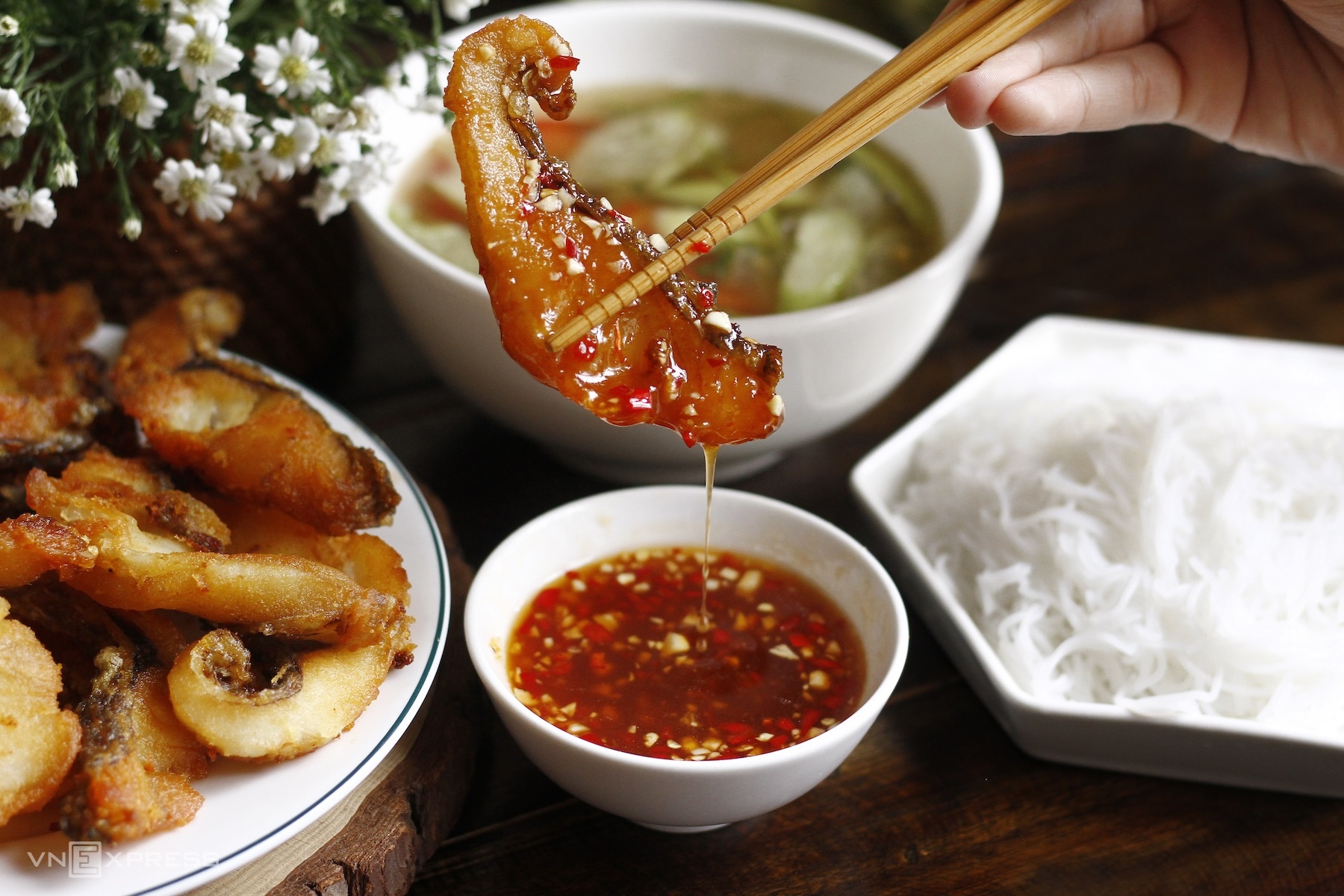 |
Bun ca cham.
Bun suon moc (pork rib and meatball noodle soup)
This is another classic Hanoi dish loved for its tender meatballs with a hint of mushroom, fragrant pork ribs, crunchy bamboo shoots, and a light, sweet broth.
Bui Thuy




